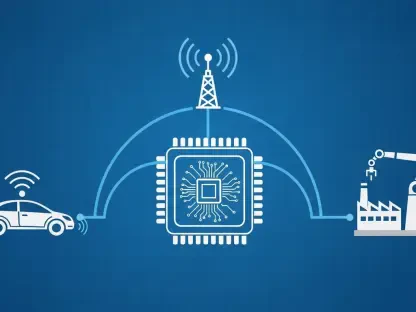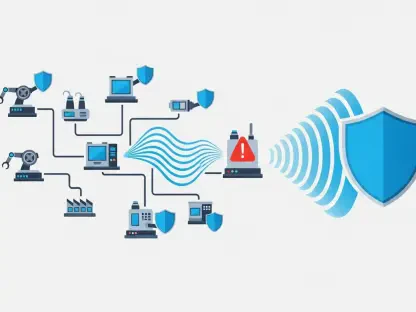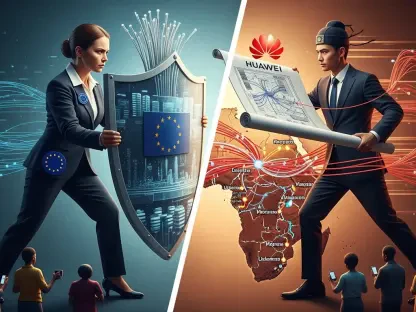In an era where staying connected is more vital than ever, T-Mobile has unveiled a transformative advancement in mobile communication with the expansion of its T-Satellite service, announced on October 1, 2025, through a strategic partnership with Starlink. Initially introduced just over two months ago for basic messaging and emergency texting, this service now empowers users to access a broad spectrum of smartphone applications, including voice and video chats, navigation tools, weather updates, and social media platforms, even in the most remote areas devoid of traditional cellular coverage. This development is not merely an upgrade but a bold redefinition of what connectivity means, ensuring that geographical isolation no longer equates to digital disconnection. By seamlessly integrating satellite data with everyday app functionalities, T-Mobile is setting a new standard for how individuals and businesses interact with technology, promising a future where being off-grid does not mean being out of touch.
Bridging the Digital Divide
T-Mobile’s T-Satellite service is breaking down barriers that have long plagued mobile users in remote or underserved regions by leveraging Starlink’s robust satellite network to deliver data directly to devices. Compatible with the latest operating systems such as Android 16 and iOS 26, this service ensures that essential app features remain accessible, whether it’s making a call on WhatsApp, plotting a route with AllTrails, or getting real-time forecasts from AccuWeather. Although the data speeds may not match the lightning-fast capabilities of 5G, the sheer ability to maintain these critical connections in areas where cellular towers are absent marks a significant shift. This innovation addresses a persistent challenge in mobile technology, making digital tools a reliable companion no matter the location, and highlights T-Mobile’s commitment to ensuring that connectivity is a universal right rather than a privilege confined to urban centers.
The implications of this expanded reach are far-reaching, particularly for those who frequently find themselves beyond the grasp of traditional networks, such as adventurers, rural residents, or travelers in isolated areas. T-Satellite offers a lifeline that keeps users tethered to the digital world, enabling them to share updates, seek information, or coordinate plans while surrounded by wilderness or during unexpected signal dropouts on long journeys. This isn’t just about convenience; it’s about empowering people with the confidence that their devices will function as vital tools for communication and safety, regardless of where they are. By extending app functionality to these previously unreachable zones, T-Mobile is not only enhancing user experience but also reshaping expectations about what mobile connectivity can achieve in the modern age.
A Lifeline for Safety and Emergencies
One of the most compelling aspects of T-Satellite’s expansion is its reinforced focus on safety and emergency response, building on the service’s early success in critical situations. An early instance of its impact was seen in the rescue of a Girl Scout stranded in a California canyon, facilitated by satellite-enabled messaging. Now, with the addition of voice and video capabilities alongside location-sharing features through apps like CalTopo, the service equips users with even more robust tools to seek assistance or communicate their whereabouts during crises. This enhancement is invaluable for anyone venturing into remote areas or facing sudden emergencies far from conventional network coverage, ensuring that help is just a connection away. T-Mobile’s dedication to bolstering safety through technology underscores the profound human impact of this initiative.
Beyond individual adventurers, this safety net extends to communities and organizations operating in challenging environments, where reliable communication can mean the difference between swift resolution and prolonged distress. T-Satellite’s ability to support real-time interaction through various app functionalities ensures that emergency responders, disaster relief teams, or even families caught in natural calamities can maintain contact with vital resources. This expanded capability transforms smartphones into indispensable instruments of security, providing peace of mind to users who might otherwise feel vulnerable in isolated settings. By prioritizing these life-saving features, T-Mobile is setting a benchmark for how mobile services can contribute to personal and communal well-being in an increasingly unpredictable world.
Inclusivity Across Diverse Users
T-Satellite’s design reflects a commitment to versatility, catering to a wide array of users from individual consumers to large-scale enterprises. For T-Mobile customers on premium plans, access to this satellite connectivity comes at no additional cost, while those on other carriers can opt in for a nominal fee of $10 per month, ensuring broad accessibility across different networks. This inclusive pricing model democratizes access to cutting-edge technology, allowing everyday users to benefit from satellite data whether they’re exploring national parks or navigating rural dead zones. The service’s compatibility with a variety of devices further amplifies its reach, making it a practical solution for anyone seeking reliable connectivity without the burden of complex requirements or exorbitant costs.
Businesses and government entities also stand to gain significantly from T-Satellite’s tailored solutions, with applications like Dialpad for AI-driven communication and FLORIAN for incident command addressing specific industry needs. Sectors such as healthcare, logistics, and public safety can now maintain uninterrupted operations in remote or emergency scenarios, ensuring that field teams remain connected to central systems for coordination and decision-making. This adaptability highlights T-Mobile’s foresight in recognizing the diverse demands of modern connectivity, from personal convenience to mission-critical tasks. By crafting a service that serves such a varied audience, T-Mobile is not just enhancing app access but also fostering a more connected and responsive society across multiple domains.
Pioneering Through Partnerships
Central to T-Satellite’s success is T-Mobile’s collaborative ethos, evident in its partnership with Starlink and a growing network of app developers. By working closely with creators of popular platforms, the company ensures that apps are optimized for satellite connectivity, delivering core functionalities even under constrained data conditions. This joint effort means users can rely on familiar tools for communication, navigation, and information, without sacrificing essential features due to location limitations. Such partnerships are a testament to T-Mobile’s innovative spirit, prioritizing user needs through strategic alliances that enhance the overall digital experience in unprecedented ways.
Moreover, T-Mobile’s invitation to additional developers to build satellite-ready applications signals an intent to continuously evolve the T-Satellite ecosystem. This open approach fosters a dynamic environment where new tools and services can emerge to meet evolving user demands, from niche outdoor apps to enterprise solutions. The collaboration extends beyond mere technology integration, representing a shared vision of connectivity that transcends traditional boundaries. By nurturing this growing network of innovators, T-Mobile positions itself at the forefront of a movement that could redefine mobile app usage, ensuring that the benefits of satellite data are felt across an ever-expanding range of contexts and communities.
Effortless Integration for Users
A standout feature of T-Satellite lies in its seamless user experience, designed to eliminate the friction often associated with advanced technology. The service automatically transitions to satellite data when terrestrial signals are unavailable, requiring no manual adjustments or technical expertise from users. This intuitive functionality ensures that staying connected in remote areas is as straightforward as using a smartphone in a bustling city, aligning with T-Mobile’s philosophy that technology should simply work without added complexity. Such ease of use is particularly crucial during high-stress situations or for those less familiar with intricate device settings, making connectivity a dependable constant.
This user-centric approach also addresses the practical challenges of maintaining app access in diverse scenarios, whether during a sudden network outage or while navigating rural landscapes. By removing the need for active intervention, T-Satellite ensures that critical functions remain available at a moment’s notice, be it for checking weather updates before a storm or reaching out during an emergency. This reliability transforms the way users interact with their devices, fostering trust in the technology as a consistent partner rather than a source of frustration. T-Mobile’s focus on effortless integration not only enhances the appeal of T-Satellite but also sets a precedent for how mobile services can prioritize accessibility and simplicity in an increasingly digital world.
Shaping the Future of Mobile Networks
T-Satellite’s expansion represents more than an immediate solution; it signals a broader trend within the mobile industry toward integrating satellite and terrestrial networks to close connectivity gaps. As the demand for constant digital access intensifies across personal and professional spheres, T-Mobile’s pioneering effort could inspire other carriers and technology leaders to explore similar hybrid models. This shift has the potential to redefine global communication standards, ensuring that even the most isolated regions are woven into the fabric of the digital landscape. The implications of such a trend extend beyond individual convenience, promising to reshape economic and social interactions in areas long hindered by limited access.
Looking ahead, the success of T-Satellite may catalyze further innovations in how mobile services address the challenges of universal connectivity, from enhancing data speeds over satellite to expanding app compatibility. This initiative serves as a blueprint for tackling the persistent issue of digital inequality, highlighting the role of strategic partnerships and technological advancements in creating a more inclusive network infrastructure. By leading the charge in this space, T-Mobile not only addresses current user needs but also lays the groundwork for a future where location is no longer a barrier to staying connected, potentially transforming the very nature of mobile communication for generations to come.









